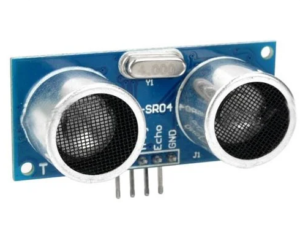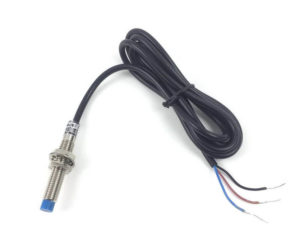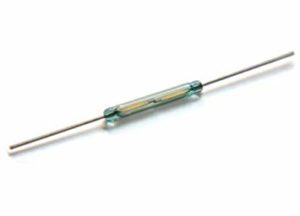Proximity sensors – often called proximity switches – detect the presence of nearby objects without making physical contact with them. These objects are called targets. There are several types of proximity sensors, including those used to detect metallic or non-metallic objects. Others are used to detect a specific object.
These sensors also have different operating principles. However, each of them lacks mechanical parts, offers contactless operation, and is unaffected by the environment around it. They are also highly durable and suitable for a wide range of applications.
Typically, proximity sensors are classified based on their detection targets, such as type of material or detection of something in the environment.
According to the detection method, proximity sensors are classified into five categories:
1. Optician
2. Ultrasonic
3. Inductive
4. Capacity
5. Magnetic
Optical proximity sensors
Optical proximity sensors are used for light detection and typically employ an infrared spectrum of light. The sensor consists of a light source, such as an IR LED or laser diode, and a light detector, such as a photodiode or phototransistor. The light source transmits IR radiation, which is reflected by a nearby object. The reflected radiations are detected by the detector, which then generates a voltage output.
Optical sensors offer a short detection range and can perceive different types of materials. However, its detection ability may be affected by the nature of an object, the presence of dust, or other environmental factors.
These sensors are commonly used for object detection, product classification, and contrast detection.

Ultrasonic proximity sensors
As the name suggests, ultrasonic sensors use ultrasonic sound waves to detect objects of various materials. They are generally used to detect the distance to an object or surface area. The sensor will emit ultrasonic pulses that an object will reflect. These reflected waves are identified and the time required for this is calculated. According to this calculation, the distance to the object is determined.
Ultrasonic sensors can have a range of several meters. Because they employ sound waves, these sensors are sensitive to temperature changes and movement. They are generally used to detect the distance or movement of nearby objects or surface areas.

Inductive proximity sensors
Inductive sensors use inductance for detection. These sensors are used to detect metallic objects in the vicinity of their active side by employing an electromagnetic field to induce an eddy current in a nearby object.
The electromagnetic field is produced using an oscillation circuit. Due to the eddy current in the target, a second magnetic field is produced, which is detected by a receiving coil. As the sensor approaches the target, the induction current in the target increases and the load on the oscillation circuit increases. As a result, the oscillation attenuates or stops.
When the oscillation attenuates, its amplitude decreases. A circuit detects the change in oscillation state and functions as an indicator, typically producing a digital or analog output.
It is important to note that these sensors are only used to detect metallic objects. They have a short detection range and anything magnetic in nature can affect their operation. These low-cost sensors are often used as metal detectors or to support object detection at toll booths or on assembly lines.

Magnetic proximity sensors
These sensors use permanent magnets for detection and are used to locate magnetic objects at a critical distance. When a target enters the sensor's detection range, it triggers a switching process due to its magnetic characteristics.
Even compact magnetic sensors can locate magnetic objects from long distances, penetrating wood, plastic and other non-magnetizable surfaces.
As an operating principle, they can work based on:
- Hall effect
- Magneto-resistive effect
- Variable reluctance
- Giant magneto-resistive effect
- Reed switches
Magnetic proximity sensors are particularly sensitive to Reed-techno magnetic field disturbances and the Hall effect.

Capacitive proximity sensors
Capacitive sensors use a change in capacitance to detect an object. They consist of a high-frequency oscillator with a sensing surface formed by a pair of electrodes.
As an object approaches the sensor, the capacitance between the electrodes changes due to the electrostatic field. The change in capacitance increases the amplitude of the oscillation. When the amplitude of the oscillation reaches a certain threshold, the sensor identifies the presence of the target.
These sensors offer a short range and can detect various types of materials. However, this ability can be affected by the dielectric properties of the target and humidity.
Capacitive Proximity Sensors are used to identify objects across a surface or to detect different levels of liquid and solid materials.

Conclusion
There are several types of proximity sensors, including optical, ultrasonic, inductive, magnetic, and capacitive types. Each type works on a different operating principle, detecting objects based on a defined feature, such as sound waves or capacitance.
Depending on the type, proximity sensors identify metallic, non-metallic or magnetic objects within a defined environment or path.

